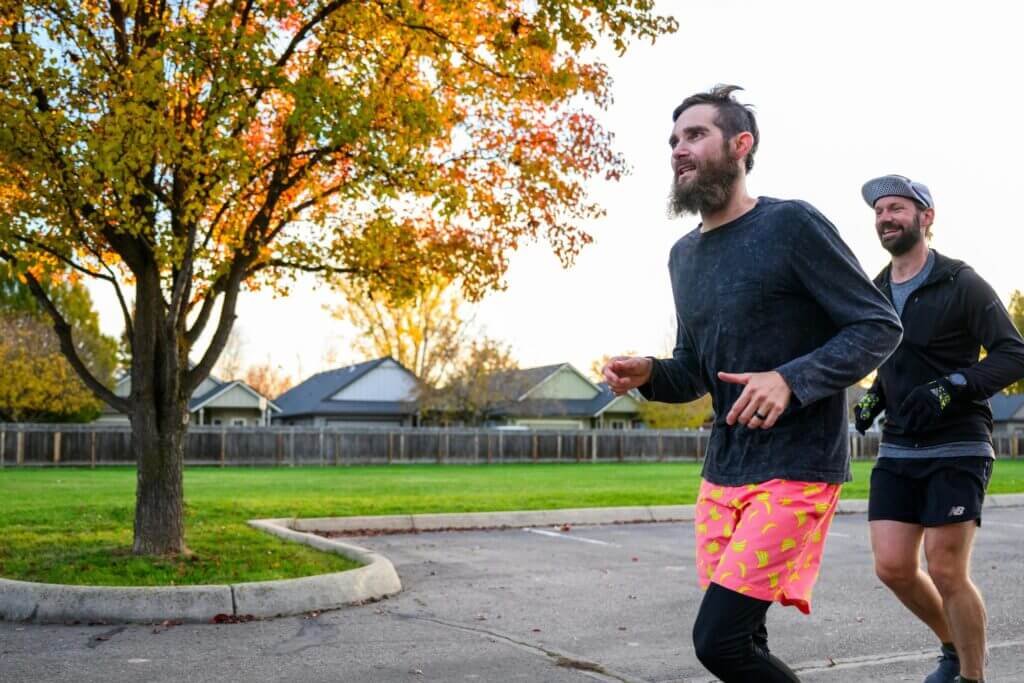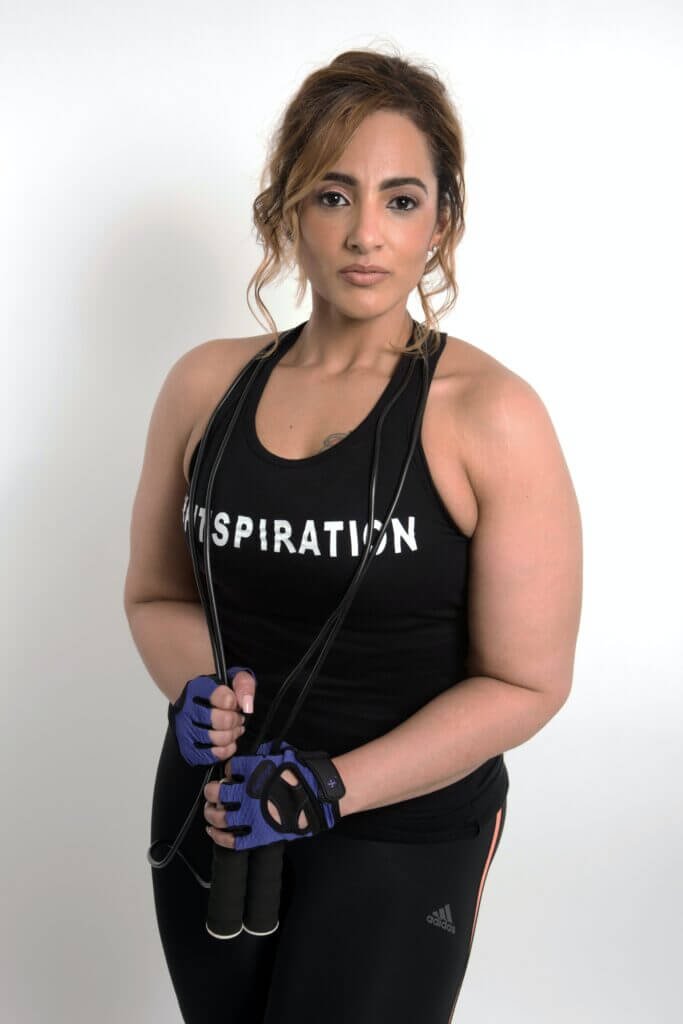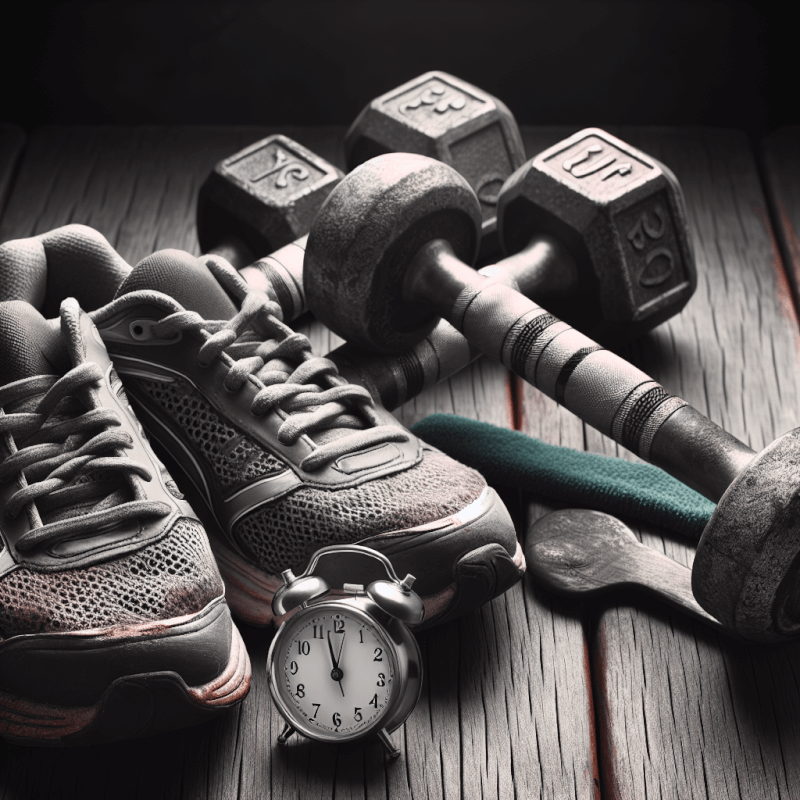Are you in your 50s and feeling motivated to get in shape? Don’t worry, it’s never too late to start! In this article, we will explore practical tips and strategies to help you achieve your fitness goals and improve your overall health. From staying active to making mindful dietary choices, we’ve got you covered. Let’s embark on a journey to a healthier, happier you!
Importance of Exercise
Exercise plays a crucial role in maintaining overall health and well-being, especially for individuals over the age of 50. Regular physical activity not only helps in managing weight, but it also contributes to cardiovascular health, mental well-being, and maintaining muscle strength and flexibility. As you age, taking care of your body becomes increasingly important, and exercise becomes an essential part of maintaining a healthy lifestyle. By incorporating various types of exercises into your routine, you can experience numerous benefits that will enhance your quality of life.
Benefits of Exercise
Regular exercise offers a multitude of benefits for individuals over 50. These include:
Improved cardiovascular health: Engaging in cardiovascular exercises, such as walking, cycling, or swimming, helps strengthen your heart muscles, lowers blood pressure, and reduces the risk of heart disease.
Increased muscle strength and flexibility: Strength training exercises assist in building and maintaining muscle mass, which tends to decline with age. These exercises also improve flexibility, making everyday tasks easier and reducing the risk of injury.
Weight management: As metabolism slows down with age, maintaining a healthy weight becomes more challenging. Regular exercise helps in managing weight by burning calories and increasing muscle mass.
Enhanced mental well-being: Exercise not only benefits the body but also has a positive impact on mental health. Physical activity releases endorphins, which promote feelings of happiness and reduce symptoms of anxiety and depression.
Improved balance and stability: Incorporating exercises that focus on balance and stability can help reduce the risk of falls, a common concern for many older adults. Strengthening core muscles and practicing specific balance exercises can significantly enhance stability and prevent accidents.
Increased bone density: Weight-bearing exercises, such as walking or strength training, help maintain and improve bone density, reducing the risk of osteoporosis and fractures.

Exercise Guidelines for Adults Over 50
While exercise is essential for everyone, it is crucial to follow specific guidelines to ensure safety and maximum benefits, especially for individuals over the age of 50. Before starting any new exercise routine, it is advisable to consult with your healthcare provider. They can provide personalized advice based on your individual health conditions and limitations. Here are some general exercise guidelines for adults over 50:
Start gradually: If you have been relatively inactive or haven’t exercised in a while, it is important to begin slowly and gradually increase the intensity and duration of your workouts. This approach helps prevent injuries and allows your body to adapt to the physical demands of exercise.
Choose activities you enjoy: Engaging in exercises that you find enjoyable increases the likelihood of sticking to a regular routine. Whether it’s walking, swimming, dancing, or participating in group fitness classes, finding activities that you look forward to will make exercise more fun and sustainable.
Prioritize cardiovascular exercises: Aim for at least 150 minutes of moderate-intensity aerobic activity or 75 minutes of vigorous-intensity aerobic activity each week. This can be achieved through activities like brisk walking, cycling, swimming, or participating in aerobic classes.
Incorporate strength training: Include strength training exercises at least twice a week to improve muscle strength and maintain bone health. Focus on all major muscle groups, including the legs, arms, back, chest, shoulders, and core. Use resistance bands, free weights, or weight machines to perform exercises such as squats, lunges, push-ups, and bicep curls.
Don’t forget flexibility exercises: Stretching regularly helps improve flexibility and range of motion, making everyday activities easier and reducing the risk of injury. Incorporate gentle stretches into your fitness routine or consider activities like yoga or Pilates, which focus on flexibility and body awareness.
Prioritize balance and stability exercises: As you age, maintaining good balance becomes crucial to prevent falls and injuries. Include exercises that challenge your balance, such as standing on one leg, heel-to-toe walking, or trying yoga poses that improve balance and stability.
Listen to your body: Pay attention to any signs of discomfort or pain during exercise. If you experience chest pain, shortness of breath, or dizziness, stop exercising immediately and seek medical attention. Always prioritize your safety and well-being.
By following these exercise guidelines and customizing your routine according to your individual needs, you can reap the many benefits of regular physical activity well into your 50s and beyond.
Cardiovascular Exercises
Cardiovascular exercises, also known as aerobic exercises, are crucial for maintaining optimal heart health, managing weight, and improving overall fitness levels. Here are three popular cardiovascular exercises suitable for adults over 50:
Walking
Walking is one of the most accessible and beneficial exercises for individuals of all ages, including those over 50. It is a low-impact activity that can be easily incorporated into daily routines. Aim for a brisk walk for at least 30 minutes a day, or break it down into multiple shorter sessions if needed. Walking not only improves cardiovascular health but also burns calories, strengthens bones, and boosts mood.
Cycling
Cycling is a fantastic cardiovascular exercise that is gentle on the joints, making it an excellent choice for older adults. Whether you prefer outdoor biking or using a stationary bike, cycling helps improve heart health, strengthens leg muscles, and increases endurance. Consider joining a cycling group or exploring scenic bike paths to make your cycling workouts more enjoyable.
Swimming
Swimming is a low-impact exercise that works the entire body without putting strain on joints. It is particularly suitable for individuals with arthritis or joint pain. Swimming helps improve cardiovascular endurance, strengthens muscles, and enhances flexibility. If you’re new to swimming or unsure about swimming techniques, consider taking lessons or participating in aqua aerobics classes.
Incorporating these cardiovascular exercises into your routine not only strengthens your heart but also improves your overall fitness, allowing you to enjoy the benefits of an active and healthy lifestyle.

Strength Training
Strength training, also known as resistance training, is crucial for maintaining and building muscle mass, improving bone density, and increasing overall strength. Here are the key components of strength training for adults over 50:
Benefits of Strength Training
Strength training offers numerous benefits for individuals over 50. These include:
Increased muscle strength: Strength training exercises help build and maintain muscle mass, which tends to decline with age. By increasing muscle strength, you can perform daily tasks more easily and maintain independence.
Improved bone density: Weight-bearing strength training exercises, such as lifting weights or using resistance bands, stimulate bone growth and can help prevent the development of osteoporosis.
Enhanced metabolism: As muscle mass increases, so does your resting metabolic rate. This means that you burn more calories even when at rest, which can aid in weight management.
Better joint health: Strengthening the muscles around joints can help alleviate joint pain and improve joint stability, reducing the risk of injury and conditions such as arthritis.
Types of Strength Training Exercises
There are various types of strength training exercises suitable for older adults. They can be performed using different equipment or just your body weight. Here are a few examples:
Resistance band exercises: Resistance bands are inexpensive and versatile tools for strength training. They provide resistance throughout the entire range of motion, making them great for building strength in various muscle groups.
Free weights: Dumbbells or kettlebells can be used for strength training exercises such as bicep curls, shoulder presses, squats, and lunges. Start with lighter weights and gradually increase as you get stronger.
Weight machines: Gym machines provide stability, making them suitable for individuals with balance or stability concerns. These machines target specific muscle groups and allow you to adjust the resistance according to your fitness level.
How to Start Strength Training at 50+
Before starting any strength training program, consult with a qualified fitness professional or your healthcare provider to ensure it is safe and appropriate for you. Here are some tips to get started with strength training:
Warm up: Begin each strength training session with a few minutes of light cardiovascular activity, such as walking or cycling, to warm up your muscles and prepare them for exercise.
Start with lighter weights: Focus on proper form and technique initially by using lighter weights or resistance bands. This allows your muscles to adapt and reduces the risk of injury.
Gradually increase intensity: As you gain strength and become more comfortable with the exercises, gradually increase the weight or resistance. Aim to reach a point of mild to moderate fatigue by the end of each set.
Include all major muscle groups: Design your strength training routine to target all major muscle groups, including arms, legs, back, chest, shoulders, and core. Perform 8-12 repetitions of each exercise, gradually increasing the number of sets as you progress.
Rest and recovery: Allow your muscles at least 48 hours of rest between strength training sessions to recover and rebuild. During rest days, you can focus on other forms of exercise, such as cardiovascular or flexibility exercises.
By incorporating regular strength training exercises into your fitness routine, you can maintain and improve muscle strength, bone density, and overall functional abilities well into your 50s and beyond.
Flexibility Exercises
Flexibility exercises are essential for maintaining mobility, preventing stiffness, and improving overall range of motion. As we age, it becomes even more crucial to prioritize flexibility to counteract the natural decline in joint mobility. Here’s why flexibility exercises are beneficial and some stretching routines suitable for older adults:
Benefits of Flexibility Exercises
Incorporating flexibility exercises into your fitness routine offers several benefits, including:
Improved joint mobility: Flexibility exercises help maintain and even improve the range of motion in your joints, allowing you to move more easily and perform daily activities without restrictions.
Enhanced posture and alignment: Regular stretching can help correct imbalances, improve posture, and reduce the risk of developing musculoskeletal issues.
Reduced muscle tension and soreness: Stretching can alleviate muscle tension, soreness, and stiffness, particularly after challenging workouts or long periods of inactivity.
Stretching Routines for Older Adults
When performing flexibility exercises, it is important to focus on gentle stretching techniques that are appropriate for your fitness level and physical abilities. Here are some stretching routines suitable for older adults:
Neck stretches: Gently tilt your head side to side, forward and backward, and rotate it in a circular motion to stretch the neck muscles. Hold each stretch for 15-30 seconds, breathing deeply and avoiding any pain or discomfort.
Shoulder stretches: Extend one arm across your chest and use the opposite hand to gently pull the arm closer to your body. Hold for 15-30 seconds and switch sides. You can also perform shoulder rolls or circular arm movements to increase flexibility.
Chest stretches: Stand or sit upright, interlace your fingers behind your back, and gently lift your hands away from your body. This stretch opens up the chest and shoulders. Hold for 15-30 seconds and repeat a few times.
Hamstring stretches: Sit on the edge of a chair or on the floor with one leg extended. Gently lean forward, reaching towards your toes while keeping your back straight. Hold for 15-30 seconds and switch legs.
Calf stretches: Stand facing a wall or sturdy object. Place one foot in front of the other, keeping both heels on the ground. Lean forward, gently pressing your hands against the wall. You should feel a stretch in the calf of the back leg. Hold for 15-30 seconds and switch legs.
Quadriceps stretches: Stand near a wall or use a chair for support. Bend one knee and bring your heel towards your glutes. Gently grasp your ankle or foot with the corresponding hand and hold for 15-30 seconds. Repeat on the other side.
Incorporate these stretching routines into your fitness regimen at least two to three times a week, aiming for a total of 10-15 minutes per session. Remember to stretch in a pain-free range and avoid bouncing or jerking movements, as this can increase the risk of injury. Regular flexibility exercises will help you maintain optimal mobility and reduce the risk of muscle tightness or stiffness.

Balance and Stability Exercises
Maintaining good balance and stability is crucial for reducing the risk of falls, injuries, and maintaining independence as you age. Engaging in specific exercises that target balance and stability can significantly improve your overall strength and coordination. Here’s why balance and stability exercises are important and some exercises to incorporate into your routine:
Importance of Balance and Stability
With age, maintaining good balance becomes even more critical due to biological changes, decreased muscle strength, and potential side effects of medications. Improving balance and stability offers several benefits, including:
Fall prevention: Balance exercises help improve coordination, proprioception (the body’s sense of its position and movement in space), and muscle strength, thereby reducing the risk of falls.
Enhanced posture: Good balance and stability contribute to improved posture, alignment, and even gait. This can reduce strain on muscles and joints, alleviating pain and discomfort.
Increased confidence: By practicing balance exercises regularly, you can boost your confidence in performing daily activities, such as walking on uneven surfaces or climbing stairs.
Exercises to Improve Balance and Stability
Here are some exercises that can help improve balance and stability:
Single-leg stance: Stand near a sturdy object, such as a chair, for support. Lift one foot off the ground, balancing on the other leg. Hold the position for 10-30 seconds, gradually increasing the duration as your balance improves. Switch legs and repeat. To make it more challenging, try closing your eyes or performing the exercise without holding onto any support.
Heel-to-toe walk: Position one foot in front of the other, with the heel of the front foot touching the toes of the back foot. Take a step forward, placing the heel of the back foot against the toes of the front foot. Continue this heel-to-toe walking pattern for 10-20 steps.
Yoga or tai chi: Engaging in yoga or tai chi classes can significantly improve balance, stability, and body awareness. These practices focus on slow, controlled movements, deep breathing, and mindfulness, all of which contribute to overall well-being and balance improvement.
Eye-tracking exercises: Stand or sit in a comfortable position and focus your gaze on a specific spot. Without moving your head, move your eyes smoothly to the left, then to the right. Repeat this eye tracking motion for 10-15 repetitions. This exercise helps improve eye coordination and stability.
It’s important to note that balance and stability exercises should be performed in a safe environment, with adequate space and minimal distractions. Incorporate these exercises into your routine at least two to three times a week, progressing gradually as your balance improves. You can also seek guidance from a qualified fitness professional to design a personalized balance training program suitable for your needs.
Functional Training
Functional training is a form of exercise that focuses on movements and exercises that mimic everyday activities. It improves strength, coordination, balance, and mobility, making it an essential component of fitness for individuals over 50. Here’s why functional training is important and how to incorporate it into your fitness routine:
What is Functional Training
Functional training involves performing exercises and activities that closely resemble movements you perform in daily life. Unlike traditional strength training that focuses on isolated muscle groups, functional training targets multiple muscle groups and joints simultaneously. This type of training enhances your ability to perform everyday tasks efficiently and reduces the risk of injury.
Functional training exercises often involve using your body weight, resistance bands, kettlebells, or balance equipment to challenge different muscle groups and movement patterns. Some examples of functional exercises include squats, lunges, pushing, pulling, and twisting movements.
Importance of Functional Fitness at 50+
As you age, maintaining functional fitness becomes particularly important to maintain independence and quality of life. Functional training offers several benefits for individuals over 50, including:
Improved overall strength: Functional exercises engage multiple muscle groups simultaneously, mimicking real-life movements. This enhances overall strength and makes daily tasks, such as carrying groceries or climbing stairs, easier.
Enhanced balance and stability: Many functional exercises require core activation, which improves balance and stability. This reduces the risk of falls and related injuries, allowing you to navigate uneven surfaces or walk on unstable ground with greater ease.
Increased joint flexibility and mobility: Functional training involves performing exercises in various planes of motion, engaging joints and muscles in multiple directions. This helps maintain and improve joint flexibility and mobility, reducing the risk of stiffness and discomfort.
Better coordination and body awareness: Functional training challenges your coordination and body awareness as you perform movements that require balance, agility, and precision. Over time, this improves your overall motor skills and contributes to better movement control.
Incorporating Functional Training into Your Routine
To incorporate functional training into your fitness routine, consider the following tips:
Start slowly: If you’re new to functional training, start with simple exercises that mimic basic movements, such as squats or lunges. Focus on proper form and technique before increasing the intensity or complexity of the exercises.
Engage your core: Functional exercises often require core stability and activation. Prioritize maintaining a strong core during movements and focus on engaging your abdominal muscles throughout the exercises.
Use body weight exercises: Many functional exercises can be performed using just your body weight, making them accessible and convenient to do at home or while traveling. Examples include squats, push-ups, lunges, planks, and step-ups.
Incorporate balance challenges: Functional exercises that incorporate balance challenges, such as single-leg stands or standing on an unstable surface, can significantly improve balance and stability. Just make sure to perform these exercises in a safe environment and use appropriate support if needed.
Seek guidance: Consider working with a certified personal trainer or physical therapist who specializes in functional training for older adults. They can design a safe and effective program tailored to your specific needs and fitness level.
By incorporating functional training into your exercise routine, you can enhance your overall strength, balance, and mobility, allowing you to maintain an active and independent lifestyle well into your 50s and beyond.

Healthy Diet
Maintaining a healthy diet is an essential component of overall fitness and well-being, regardless of age. As you enter your 50s and beyond, paying attention to proper nutrition becomes even more important to support your body’s changing needs and promote optimal health. Here’s why nutrition is crucial for fitness and some guidelines to follow when considering a balanced and nutrient-rich diet:
Importance of Nutrition for Fitness
A healthy diet that meets your nutritional needs provides the necessary fuel for physical activity, supports muscle recovery, and promotes overall well-being. Here are some reasons why nutrition plays a vital role in fitness, particularly for individuals over 50:
Energy for workouts: A well-balanced diet provides the energy required for exercise, keeping you energized and motivated to engage in physical activity regularly.
Muscle recovery and repair: Adequate protein intake is essential for muscle recovery and repair. As you age, maintaining muscle mass becomes increasingly important, and consuming enough protein supports this process.
Bone health: Proper nutrition, including sufficient calcium and vitamin D, helps maintain healthy bones and reduces the risk of osteoporosis and fractures.
Increased immune function: A balanced diet rich in vitamins, minerals, and antioxidants supports a robust immune system, reducing the risk of illness and promoting overall health.
Weight management: A nutritious diet plays a crucial role in weight management by providing the necessary nutrients while controlling calorie intake. Maintaining a healthy weight reduces the risk of various chronic conditions and supports overall fitness.
Balanced and Nutrient-Rich Diet for Adults Over 50
When considering a balanced and nutrient-rich diet, follow these guidelines for optimal health and fitness:
Eat a variety of foods: Include a wide range of fruits, vegetables, whole grains, lean protein sources, and healthy fats in your diet. This ensures you get a variety of essential nutrients and antioxidants.
Prioritize fruits and vegetables: Aim to consume at least five servings of fruits and vegetables each day. These provide fiber, vitamins, and minerals that support overall health and well-being.
Choose lean protein sources: Opt for lean protein sources such as skinless poultry, fish, beans, lentils, tofu, or low-fat dairy products. Adequate protein intake supports muscle recovery, maintenance, and overall health.
Incorporate whole grains: Choose whole grain products such as whole wheat bread, brown rice, quinoa, and oats. These provide fiber, vitamins, and minerals, and help maintain steady blood sugar levels.
Include healthy fats: Consume foods rich in healthy fats, such as avocados, nuts, seeds, olive oil, and fatty fish like salmon. These fats provide essential omega-3 fatty acids and support heart health.
Stay hydrated: Drink sufficient water throughout the day to stay hydrated. Aim for at least 8 cups (64 ounces) daily, but individual needs may vary depending on activity levels and climate.
Limit processed foods and added sugars: Minimize consumption of processed foods high in added sugars, unhealthy fats, and preservatives. These provide empty calories and lack essential nutrients.
It is advisable to consult with a registered dietitian or nutritionist who specializes in nutrition for older adults. They can provide personalized guidance and help you create a meal plan that aligns with your specific dietary needs, preferences, and fitness goals.
Hydration
Hydration is crucial for maintaining overall health and well-being, regardless of age. As you enter your 50s and beyond, staying adequately hydrated becomes increasingly important to support bodily functions, physical activity, and overall fitness. Here’s why hydration matters and some tips to stay hydrated:
Why Hydration is Crucial
Water is essential for numerous bodily functions and plays a vital role in maintaining optimal health. Here are some reasons why hydration is crucial, especially for individuals over 50:
Temperature regulation: Proper hydration helps regulate body temperature, preventing overheating during physical activity or in hot weather.
Joint lubrication: Adequate hydration supports the production of synovial fluid, which lubricates joints and reduces the risk of joint pain and stiffness.
Nutrient transportation: Water carries essential nutrients to cells and aids in the absorption and assimilation of vitamins and minerals.
Digestion and elimination: Adequate hydration supports smooth digestion and regular bowel movements, reducing the risk of constipation and promoting a healthy digestive system.
Muscle function: Muscles require water for optimal performance and function. Dehydration can lead to muscle cramps, weakness, and fatigue.
How to Stay Hydrated
To maintain proper hydration levels, follow these tips:
Drink enough water: Aim to drink at least 8 cups (64 ounces) of water per day. This amount can vary depending on factors such as activity level, weather, and individual needs. Listen to your body’s thirst cues and increase your fluid intake if you feel thirsty.
Monitor urine color: Monitoring urine color can be an easy way to assess hydration status. Clear or light yellow urine generally indicates good hydration, while darker urine may suggest dehydration.
Hydrate before, during, and after physical activity: Drink water before, during, and after exercise to replenish fluids lost through sweat. If engaging in intense or prolonged physical activity, consider sports drinks that contain electrolytes to replace lost minerals.
Eat hydrating foods: Consume water-rich foods, such as fruits and vegetables, which can contribute to overall hydration. Examples include cucumbers, watermelon, berries, tomatoes, lettuce, and citrus fruits.
Limit caffeine and alcohol intake: Both caffeine and alcohol can have a dehydrating effect. Limit your consumption of these beverages, or balance them by increasing your water intake.
Set reminders: If you struggle with staying hydrated, set reminders or use smartphone apps to prompt you to drink water throughout the day. You can also carry a water bottle with you to ensure easy access to fluids.
By staying adequately hydrated, you can support your overall health, promote optimal physical performance, and maintain the wellbeing of your body’s vital systems.

Sleep and Recovery
Sleep plays a crucial role in overall fitness and well-being, and as you enter your 50s and beyond, prioritizing quality sleep becomes increasingly important. Adequate rest allows your body to recover, repair, and rejuvenate, supporting optimal physical and mental health. Here’s why sleep matters and some tips for better sleep at 50+:
The Role of Sleep in Fitness
Quality sleep is essential for several aspects of fitness and well-being, including:
Muscle recovery and growth: During deep sleep, the body releases growth hormone, which aids in the repair and growth of muscle tissue. Sufficient sleep is crucial for muscle recovery after physical activity.
Mental well-being: Quality sleep is closely linked to mental health and emotional well-being. Lack of sleep can increase the risk of mood disorders, anxiety, and depression.
Hormonal regulation: Sleep plays a role in regulating hormones, including those that control appetite, metabolism, and energy balance. Sleep deprivation can disrupt these hormonal rhythms, potentially leading to weight gain and metabolic issues.
Cognitive function: Adequate sleep supports cognitive function, memory consolidation, and overall mental performance. Getting enough rest improves focus, learning, and problem-solving abilities.
Immune system function: During sleep, the immune system strengthens and repairs itself, increasing resilience against illnesses and infections. Lack of sleep weakens the immune system and reduces its ability to fight off pathogens.
Tips for Better Sleep at 50+
To improve sleep quality and promote optimal rest, consider these tips:
Establish a sleep routine: Go to bed and wake up at the same time each day, even on weekends. This helps regulate your body’s internal clock and promotes consistent sleep patterns.
Create a sleep-friendly environment: Make your sleep environment comfortable, quiet, and cool. Use curtains or blinds to block out excess light, invest in a good quality mattress and pillows, and consider using earplugs, eye masks, or white noise machines, if needed.
Limit electronic devices before bed: The blue light emitted by electronic devices can interfere with sleep quality. Avoid using electronic devices, such as smartphones or tablets, for at least one hour before bedtime. Instead, engage in relaxing activities, such as reading or practicing meditation.
Establish a bedtime routine: Develop a relaxing bedtime routine to signal to your body that it’s time to wind down. This may include taking a warm bath, practicing deep breathing exercises, or listening to calming music.
Limit caffeine and alcohol intake: Both caffeine and alcohol can disrupt sleep patterns and reduce sleep quality. Avoid consuming these substances close to bedtime.
Exercise regularly: Engaging in regular physical activity can improve sleep quality. However, avoid exercising vigorously too close to bedtime, as it can stimulate your body and make it harder to fall asleep.
Manage stress: Stress and anxiety can disrupt sleep. Practice stress management techniques, such as mindfulness, yoga, or journaling, to promote relaxation and improve sleep quality.
If you consistently have trouble sleeping or suspect you may have a sleep disorder, consult with a healthcare professional for further evaluation and guidance.
Social Support and Accountability
Joining fitness groups or finding a workout buddy can greatly enhance your fitness journey, particularly as you enter your 50s and beyond. Social support and accountability play a valuable role in maintaining motivation, adherence to fitness routines, and overall enjoyment of physical activity. Here’s how you can benefit from social support and accountability:
Joining Fitness Groups
Joining fitness groups or classes provides numerous benefits for individuals over 50:
Motivation and encouragement: Being surrounded by like-minded individuals who share similar fitness goals can provide motivation and encouragement to stay committed to your fitness routine.
Increased adherence: Participating in group exercise classes or activities promotes adherence to a regular exercise routine. The commitment to scheduled classes or group activities helps in establishing a habit and minimizing the chances of skipping workouts.
Variety and expertise: Fitness groups often offer a wide range of classes or activities facilitated by certified instructors or trainers. This allows you to explore different types of exercise, learn proper form and technique, and benefit from professional guidance.
Social interaction: Fitness groups provide a valuable opportunity for social interaction and the formation of friendships. The sense of community and support can make exercise more enjoyable and improve overall well-being.
Finding a Workout Buddy
Having a workout buddy can offer additional benefits to your fitness journey:
Increased motivation and accountability: A workout buddy holds you accountable and provides motivation to stick to your exercise routine. When you have a committed partner with shared goals, you are more likely to show up and push yourself during workouts.
Fun and enjoyment: Exercising with a friend or partner makes workouts more enjoyable. You can engage in friendly competition, challenge each other, and share the experience, making it a fun and social activity.
Safety and support: Having a workout buddy enhances safety during physical activity, especially when performing exercises that require spotting or assistance. Additionally, your workout buddy can offer support, encouragement, and advice on form or techniques.
Setting Goals and Tracking Progress
Setting goals and tracking your progress can greatly enhance your fitness journey. Here’s why goal setting and tracking are important:
Clear direction and focus: Setting specific fitness goals, whether it’s improving endurance, increasing strength, or losing weight, provides you with a clear direction and focus for your workouts. This helps to keep you motivated and committed.
Measure progress: Tracking your progress allows you to see how far you’ve come and celebrate milestones along the way. It provides positive reinforcement and keeps you engaged in your fitness routine.
Adjustments and improvements: Regularly monitoring your progress enables you to make necessary adjustments to your exercise program. By analyzing the data and seeking feedback from fitness professionals, you can identify areas for improvement and modify your routine accordingly.
Sense of accomplishment: Achieving your fitness goals, no matter how big or small, brings a sense of accomplishment and boosts self-confidence. This, in turn, inspires you to continue striving for new milestones.
Keep a record of your workouts, noting exercises, sets, repetitions, or durations, and any insights or observations. Find a tracking method that works for you, whether it’s a journal, smartphone app, or fitness tracker. Set realistic, measurable goals and track your progress regularly. Remember, progress takes time, and celebrating small victories along the way helps maintain motivation.
Incorporating social support, finding a workout buddy, and setting goals with tracking progress will enhance your fitness journey, provide motivation, and make exercise a fulfilling and enjoyable experience.
Conclusion
Getting in shape at 50 and beyond is an achievable goal with the right mindset, knowledge, and commitment. Regular exercise, encompassing cardiovascular exercises, strength training, flexibility exercises, balance and stability exercises, and functional training, offers a multitude of benefits that improve overall health and well-being. Combined with a balanced and nutrient-rich diet, hydration, quality sleep, and social support, you can create a holistic approach towards achieving optimal fitness as you age. Embrace the importance of exercise, follow the guidelines for adults over 50, and enjoy the positive impact it will have on your physical and mental health. Remember, it’s never too late to start and reap the many rewards of a healthy and active lifestyle.


